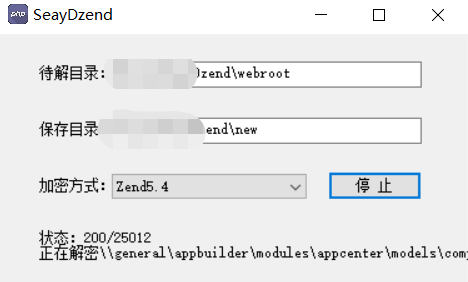最近我一直在努力训练的n-gram实体与斯坦福核心NLP。 我按照以下教程- http://nlp.stanford.edu/software/crf-faq.shtml#b
有了这个,我可以只指定的单字组令牌和它所属的类。 任何一个可以指导我,这样我可以把它扩展到正克。 我试图提取已知实体像聊天数据集电影的名字。
请通过指导我的情况下,我有错interpretted斯坦福教程和同样可以用于正克培训。
什么我坚持的是以下属性
#structure of your training file; this tells the classifier
#that the word is in column 0 and the correct answer is in
#column 1
map = word=0,answer=1
在这里,第一列是字(单字组)和第2栏是实体,例如
CHAPTER O
I O
Emma PERS
Woodhouse PERS
现在,我需要训练已知实体(说电影的名字)像绿巨人 , 泰坦尼克号等电影,它会很容易使用这种方法。 但如果我要培养我知道你去年夏天干了什么或者小鬼当街 ,什么是最好的方法呢?
那是个漫长的等待在这里的回答。 我一直无法找出得到它使用斯坦福核心所做的那样。 但是任务完成了。 我已经使用了LingPipe NLP库相同。 这里只是引用了答案,因为,我觉得有人可能从中受益。
请查看Lingpipe牌潜水前的情况下,你是一个开发人员或研究人员或什么都实现。
Lingpipe提供各种NER方法。
1)基于字典NER
2)统计学NER(基于HMM)
3)基于规则的NER等
我已经使用了字典以及统计方法。
第一种是直接的查找方法,第二个是基础训练。
对于基于字典NER的例子可以发现在这里
该statstical方法需要培训档案。 我已经使用以下格式文件 -
<root>
<s> data line with the <ENAMEX TYPE="myentity">entity1</ENAMEX> to be trained</s>
...
<s> with the <ENAMEX TYPE="myentity">entity2</ENAMEX> annotated </s>
</root>
然后我用下面的代码来训练的实体。
import java.io.File;
import java.io.IOException;
import com.aliasi.chunk.CharLmHmmChunker;
import com.aliasi.corpus.parsers.Muc6ChunkParser;
import com.aliasi.hmm.HmmCharLmEstimator;
import com.aliasi.tokenizer.IndoEuropeanTokenizerFactory;
import com.aliasi.tokenizer.TokenizerFactory;
import com.aliasi.util.AbstractExternalizable;
@SuppressWarnings("deprecation")
public class TrainEntities {
static final int MAX_N_GRAM = 50;
static final int NUM_CHARS = 300;
static final double LM_INTERPOLATION = MAX_N_GRAM; // default behavior
public static void main(String[] args) throws IOException {
File corpusFile = new File("inputfile.txt");// my annotated file
File modelFile = new File("outputmodelfile.model");
System.out.println("Setting up Chunker Estimator");
TokenizerFactory factory
= IndoEuropeanTokenizerFactory.INSTANCE;
HmmCharLmEstimator hmmEstimator
= new HmmCharLmEstimator(MAX_N_GRAM,NUM_CHARS,LM_INTERPOLATION);
CharLmHmmChunker chunkerEstimator
= new CharLmHmmChunker(factory,hmmEstimator);
System.out.println("Setting up Data Parser");
Muc6ChunkParser parser = new Muc6ChunkParser();
parser.setHandler( chunkerEstimator);
System.out.println("Training with Data from File=" + corpusFile);
parser.parse(corpusFile);
System.out.println("Compiling and Writing Model to File=" + modelFile);
AbstractExternalizable.compileTo(chunkerEstimator,modelFile);
}
}
并测试NER我用下面的类
import java.io.BufferedReader;
import java.io.File;
import java.io.FileReader;
import java.util.ArrayList;
import java.util.Set;
import com.aliasi.chunk.Chunk;
import com.aliasi.chunk.Chunker;
import com.aliasi.chunk.Chunking;
import com.aliasi.util.AbstractExternalizable;
public class Recognition {
public static void main(String[] args) throws Exception {
File modelFile = new File("outputmodelfile.model");
Chunker chunker = (Chunker) AbstractExternalizable
.readObject(modelFile);
String testString="my test string";
Chunking chunking = chunker.chunk(testString);
Set<Chunk> test = chunking.chunkSet();
for (Chunk c : test) {
System.out.println(testString + " : "
+ testString.substring(c.start(), c.end()) + " >> "
+ c.type());
}
}
}
代码礼貌:谷歌:)
答案在你引用的例子,其中“艾玛伍德豪斯”是一个名称基本放弃。 默认的模式,我们提供使用IO编码,并假定同一类的相邻的标记是相同的实体的一部分。 在许多情况下,这几乎总是正确的,并保持模型简单。 但是,如果你不想这样做,你可以训练与其他标签编码,如常用的IOB编码,在那里你会代替标签的东西NER型号:
Emma B-PERSON
Woodhouse I-PERSON
然后,将相同类别的相邻的标记,但不是相同的实体可以被表示。
我面对标记为NGRAM AUTOMATIVE domain.I短语一直在寻找可以用来在后一阶段,以建立培训档案的有效关键词映射着同样的挑战。 我结束了在NLP管道使用regexNER,通过提供与正则表达式(NGRAM术语的含义)及其相应的标签映射文件。 请注意,在这种情况下取得了不NER机器学习。 希望这些信息可以帮助别人!


